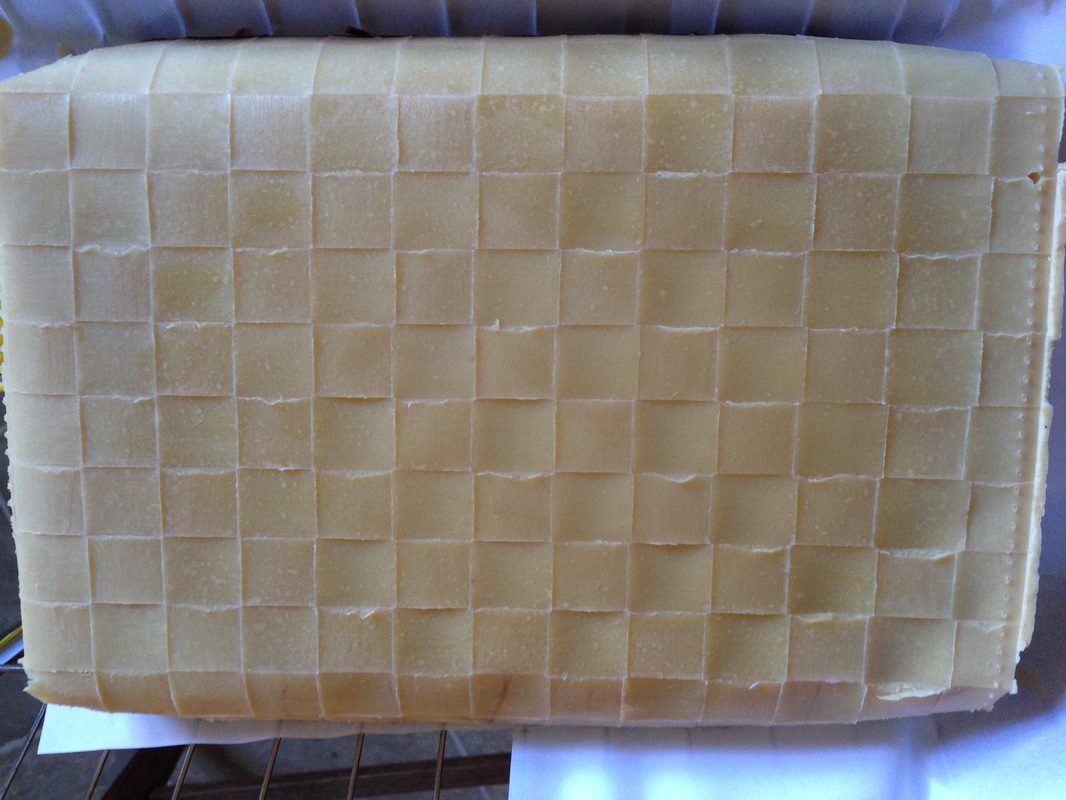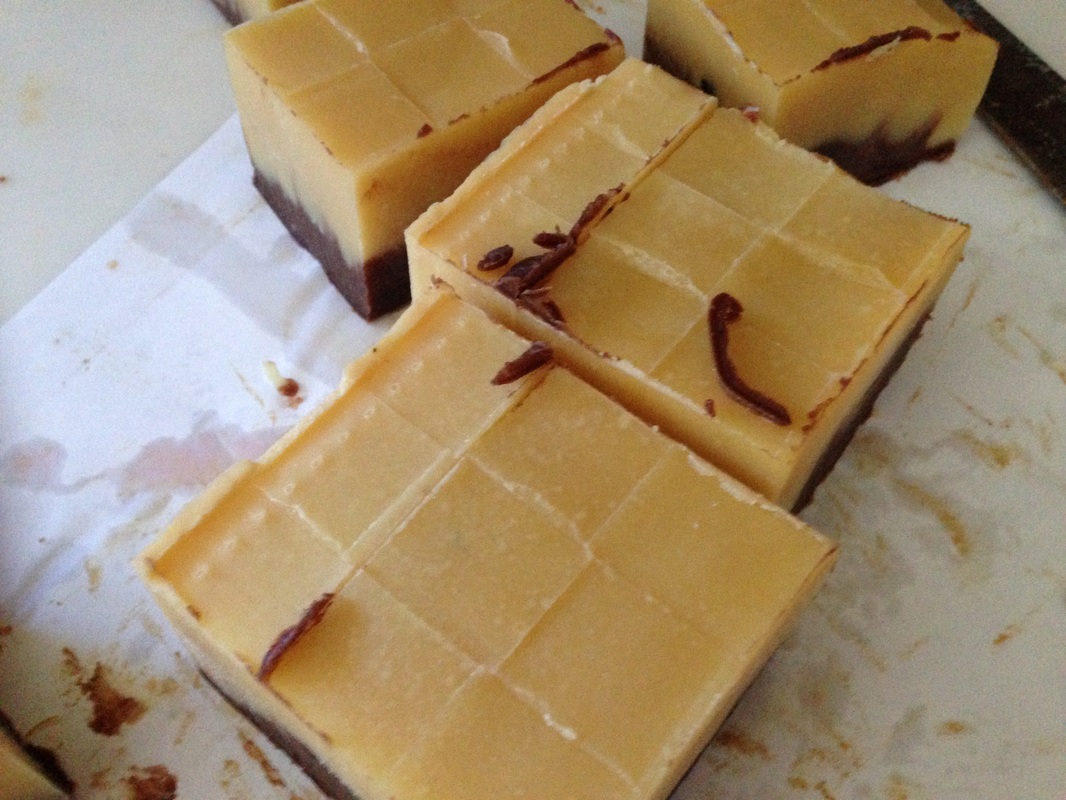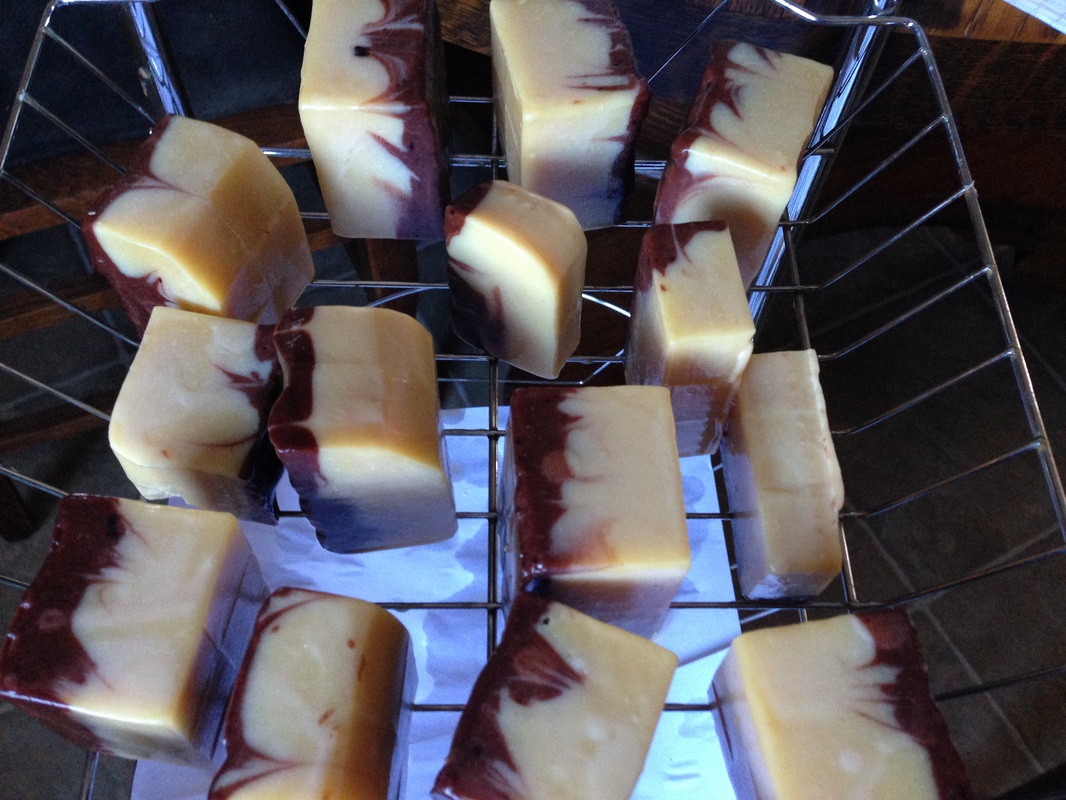No! Washing soap is what I mean.
When soap is made and then cut, there are tiny fragments and colour bleeds on the cut surfaces. There are also rough edges and sharp edges. Some soap makers bevel the edges with a potato peeler of a special soap beveler. I know a smooth edge is softer and more pleasurable in the hand, and the experience of using hand made soap can be wonderful, so I do understand the concept. But, most of my soap is rustic and plain unscented, the way I believe soap was meant to be. I am not one for all the fancy swirls and colours, things embedded in the soap, glitters and glitz, and stinky smells. None of those things are healthy, most be derived from chemicals which are not necessary.
Soap was meant to be a cleanser, however; it can also be moisturizing and treat the skin to some wonderful qualities from the unique properties of the oils used, and the herbal and botanical ingredients can contribute as well. There is no hard and true research indicating just how much is unaffected by the lye, but most of the ingredients are not saponifiable, meaning are not used to make the soap in the chemical reaction between the lye and the fats, so they are left behind to be part of an exquisite bar of soap.
But, back to the washing. Rather than bevel the edges and then spritz each soap with alcohol to polish it, I just wash each bar. The timing is crucial. The soap cannot be too hard, nor too soft. If it is too hard, the edges do not soften enough and if it is too soft, washing it washes the soap away. For cleaning two colours from one another, washing is ideal though. The soap I just made is a pumpkin seed oil goat's milk bar. Pumpkin seed oil is fantastic for sensitive and mature skin, so soothing and moisturizing. This soap also has the benefit of alphahydroxy acid from the milk, which naturally exfoliates on a minuscule level without harsh grit to irritate the skin. The skin is left supple and smooth with an imperceptible coating of the oils as a moisturizing quality, but not enough to feel greasy.
Soap and water also create a synergistic relationship. The first time soap goes to water, magic happens. The soap glistens and smoothes and readily lathers. That first lather is rinsed off and then the soap sits and dries and cures for weeks to months to years, depending on the type it is. This soap will cure for approximately 6 weeks, until the moisture content remains constant. Then it is at its optimum for longevity and usage.
So, yes, I wash the soap. It saves bevelling and smoothing, and polishing with alcohol and leaves the soap pristine and lovely. Which bar would you like to try?




 RSS Feed
RSS Feed